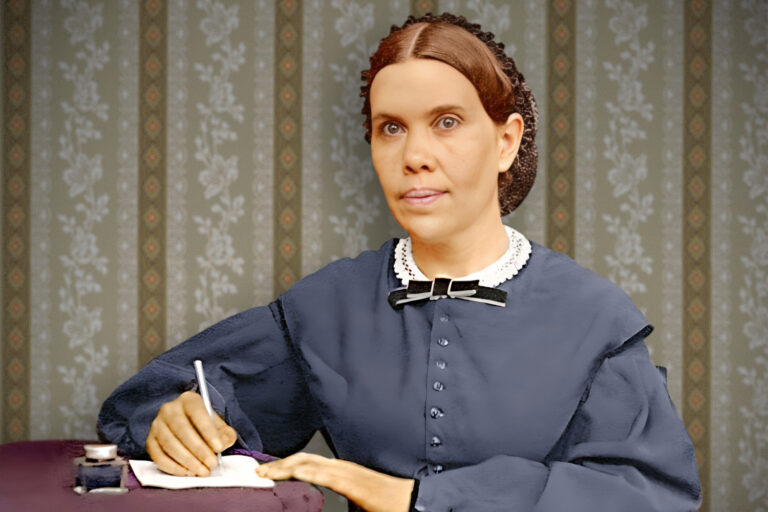Cartoon Network Presents: Powerhouse Teardrops Coming Up Next
Cartoon Network has firmly established itself as a giant in children’s entertainment, captivating audiences worldwide. From its early days in the 1990s to its present status as an animation powerhouse, the network has pioneered some of the most innovative and beloved cartoons in history. Among the defining moments in Cartoon Network’s journey, two stand out: the “Powerhouse” era and the introduction of the “Teardrops” aesthetic. These periods were not only influential in programming but also in shaping the network’s visual style and identity, making them pivotal in its evolution.
The Powerhouse Era
The Powerhouse era describes the late 1990s and early 2000s, a time when Cartoon Network launched an impressive lineup of hit shows that went on to become iconic in the animation world. These shows were groundbreaking, pushing the boundaries of children’s television with bold, creative, and often experimental content. The term “Powerhouse” comes from the distinctive bumper that aired between shows, featuring a slick, high-energy animation accompanied by Raymond Scott’s “Powerhouse,” a tune that became synonymous with the network’s bold spirit.
This era introduced several legendary cartoons that remain central to Cartoon Network’s legacy. Series like Dexter’s Laboratory, The Powerpuff Girls, Ed, Edd n Eddy, and Johnny Bravo became household names, contributing significantly to the network’s distinct image. These shows were characterized by their unique art styles, quirky humor, and willingness to tackle both lighthearted and mature themes.
The network’s approach to content during this time allowed animators and writers a great deal of creative freedom. From the absurd humor of The Grim Adventures of Billy & Mandy to the action-filled adventures in Samurai Jack, Cartoon Network embraced a vast array of genres. Some shows stood out with their surreal, bizarre qualities, while others offered deeper, more complex narratives that appealed to both kids and adults.
A key factor in the success of the Powerhouse era was the network’s strategic use of branding. The animated bumpers, including the famous “Powerhouse” animation, played a crucial role in establishing a cohesive visual identity. These bumpers, often paired with energetic music and imaginative animation, became iconic, reinforcing the channel’s reputation for boldness and creativity. The “Powerhouse” theme, combining jazz and electronic sounds, captured the experimental and dynamic nature of the network.
The Rise of the Teardrop Aesthetic
While the Powerhouse era is often seen as the golden age of Cartoon Network, the “Teardrop” phenomenon marked a shift in the network’s approach to branding and promotional content around the mid-2000s. This new era was defined by minimalist animations, a muted color palette, and abstract visuals. The Teardrop bumpers stood in stark contrast to the high-energy Powerhouse visuals, symbolizing a more refined and introspective period for the network.
The introduction of the Teardrop bumpers reflected the network’s attempt to appeal to an older audience while maintaining its core demographic of children. This transition showed the network’s desire to broaden its appeal by incorporating a more sophisticated, visually compelling style. The Teardrop aesthetic was often paired with ambient music, creating a calm, almost meditative atmosphere that contrasted with the frenetic energy of the previous era. The juxtaposition of the energetic Powerhouse era and the reflective Teardrop style marked a significant turning point in Cartoon Network’s branding.
The Teardrop style also mirrored the global shifts in animation, particularly the growing influence of stylized, artistic animation from countries like Japan, along with the demand for content that could resonate with a broader audience. This change led to the rise of shows like Foster’s Home for Imaginary Friends and The Venture Bros., which embraced a more reflective and unique tone. While not all programming from the Teardrop period followed this visual style, the branding reflected a cultural shift that influenced the network’s evolution.
One intriguing aspect of the Teardrop bumpers was their subtle emotional depth. Featuring simple, fluid animations set to ambient music, the bumpers evoked a sense of emotional resonance without being overt. This minimalist approach was a sharp contrast to the more direct and high-energy branding of the Powerhouse era but still managed to form a meaningful connection with the audience.
From Powerhouse to Teardrop: A Transition
The shift from the Powerhouse era to the Teardrop period was not an overnight change. For many fans, the move from the bold, energetic Powerhouse bumpers to the subdued, abstract Teardrop visuals was jarring. The fast-paced, catchy animations of the Powerhouse era had become so intertwined with Cartoon Network’s identity that the transition to a quieter, more minimalist style marked a noticeable shift in tone.
This transition was largely driven by the changing dynamics of children’s television in the 2000s. As audiences demanded more nuanced and visually sophisticated content, Cartoon Network adapted by refining its brand identity. This wasn’t just a change in aesthetics but also in the types of shows the network was producing. Shows like Adventure Time, Regular Show, and Steven Universe emerged in the late 2000s, marking the beginning of a new era for Cartoon Network.
Although these newer shows didn’t directly follow the minimalist style of the Teardrop bumpers, they reflected the network’s evolving approach to storytelling. By blending comedy, fantasy, and emotional depth, these shows offered a richer and more complex viewing experience, in line with the introspective vibe of the Teardrop aesthetic. Thus, the Teardrop branding, with its calm and thoughtful visuals, was a fitting complement to the content Cartoon Network was known for during this time.
Lasting Influence of the Powerhouse and Teardrop Eras
The legacies of both the Powerhouse and Teardrop eras continue to shape Cartoon Network today. The Powerhouse period solidified the network’s reputation as a leader in animation, with unforgettable characters and moments that left a lasting impact on pop culture. Shows like The Powerpuff Girls, Dexter’s Laboratory, and Cow and Chicken not only became iconic but also inspired future generations of animators and creators who would go on to shape the future of animated television.
Meanwhile, the Teardrop period introduced a more emotionally nuanced and artistic approach to animation, setting the stage for shows that blended deeper themes with whimsical storytelling. Series like Adventure Time and Regular Show connected with both younger and older audiences, preserving the childlike wonder of earlier shows while adding layers of emotional complexity.
The transition between these two eras also highlights the evolving tastes of television viewers. The Powerhouse era was characterized by its vibrant energy and fun, while the Teardrop period marked a more introspective, emotionally resonant approach to animation. Both periods contributed to Cartoon Network’s reputation as an incubator of creative innovation in the animation industry.
Key Facts
- Founded: Cartoon Network was launched on October 1, 1992, by Turner Broadcasting System, marking its place as one of the first 24-hour cable channels dedicated to animated programming.
- Target Audience: Initially designed for children, Cartoon Network has broadened its appeal over the years, offering content for all ages, including more mature shows for older audiences.
- Iconic Shows: Over the years, Cartoon Network has produced and aired some of the most popular animated shows, such as The Powerpuff Girls, Dexter’s Laboratory, Adventure Time, Steven Universe, Samurai Jack, Regular Show, and Ed, Edd n Eddy.
- Powerhouse Era: The “Powerhouse” era refers to a time in the late 1990s and early 2000s when the network became known for its bold, innovative animated series. This era included the introduction of hit shows like Dexter’s Laboratory and The Powerpuff Girls.
- Teardrop Era: In the mid-2000s, Cartoon Network introduced the “Teardrop” aesthetic, a minimalist design for its bumpers and branding. This period was characterized by more abstract, subdued visuals, reflecting a shift toward a more sophisticated and introspective style.
- Innovative Content: Cartoon Network is known for pushing boundaries with its programming. It has experimented with a variety of genres and themes, from surreal, quirky humor to emotional storytelling and high-adventure shows.
- Cartoon Network Studios: The network established Cartoon Network Studios in 1994, which became the home of many of its most popular and critically acclaimed series, providing a creative space for animators and show creators.
- Cultural Impact: Shows like The Powerpuff Girls, Adventure Time, and Steven Universe have had a profound influence on pop culture and animation, inspiring a new generation of animators and creatives.
- Global Reach: Cartoon Network is available in over 190 countries, offering localized content in many languages, ensuring its status as a major player in the global entertainment market.
- Branding and Bumpers: Throughout its history, Cartoon Network has used creative bumpers and animations to help shape its identity. These include the Powerhouse theme in the late 90s and the Teardrop style in the 2000s, both of which are closely associated with the network’s brand.
- Adult Swim: In 2001, Cartoon Network launched Adult Swim, a programming block aimed at an adult audience. This block became famous for shows like Rick and Morty, Aqua Teen Hunger Force, and The Venture Bros.
- Innovation in Storytelling: The network is recognized for its innovative approach to storytelling. Series like Adventure Time and Steven Universe have introduced more complex and layered narratives, blending comedy, fantasy, and emotional depth.
Conclusion
Cartoon Network’s journey from the high-energy Powerhouse era to the more introspective Teardrop aesthetic represents a fascinating evolution in children’s television. The Powerhouse era was a time of bold experimentation, giving rise to some of the most beloved cartoons in animation history. On the other hand, the Teardrop period marked a shift toward a minimalist, emotionally engaging style that reflected broader cultural shifts. Both eras demonstrate the network’s ability to adapt and remain relevant, always attuned to the changing demands of its audience.
Today, Cartoon Network continues to lead the animation world, building on the legacies of the Powerhouse and Teardrop eras while constantly innovating. The network’s ongoing programming, along with its iconic bumpers and branding, ensures its place as one of the most influential and beloved names in children’s entertainment. These two groundbreaking eras continue to shape the identity of Cartoon Network, cementing its place in history as a true pioneer in animation.
FAQs
1. What is Cartoon Network?
Cartoon Network is a popular television channel that focuses on animated programming, offering a wide range of cartoons for children, as well as content for older audiences. It was launched on October 1, 1992, and has become known for both its iconic shows and its role in shaping the landscape of animated television.
2. When did Cartoon Network start?
Cartoon Network was officially launched on October 1, 1992. It was created by Turner Broadcasting System and became one of the first cable channels to focus exclusively on animated programming.
3. What are some of the most popular shows on Cartoon Network?
Some of the most iconic shows on Cartoon Network include The Powerpuff Girls, Dexter’s Laboratory, Adventure Time, Samurai Jack, Regular Show, Steven Universe, The Grim Adventures of Billy & Mandy, and Ed, Edd n Eddy. These shows have become cultural staples in animated television.
4. What is the Powerhouse era?
The “Powerhouse” era refers to a period in the late 1990s and early 2000s when Cartoon Network aired a series of groundbreaking animated shows, many of which became highly influential. The era is named after the iconic “Powerhouse” bumper, featuring a fast-paced, stylish animation and a jazz-inspired theme song by Raymond Scott.
5. What is the Teardrop phenomenon on Cartoon Network?
The “Teardrop” aesthetic refers to a shift in Cartoon Network’s branding in the mid-2000s. This change featured minimalist, abstract bumpers and a more subdued color palette, in contrast to the vibrant and energetic visuals of the Powerhouse era. The Teardrop period reflected the network’s attempt to appeal to an older audience while maintaining its young fanbase.
6. What is Adult Swim?
Adult Swim is a programming block that Cartoon Network introduced in 2001, specifically aimed at adult audiences. It features more mature and experimental content, including shows like Rick and Morty, Aqua Teen Hunger Force, and The Venture Bros.
7. Why is Cartoon Network known for being innovative?
Cartoon Network is recognized for its willingness to push boundaries in both animation and storytelling. The network has produced shows that blend humor, fantasy, and emotional depth, often appealing to both children and adults. It has embraced diverse genres, experimenting with animation styles and content that was unconventional for children’s television.
8. Is Cartoon Network available worldwide?
Yes, Cartoon Network is available in over 190 countries, with localized content and translations to reach global audiences. The network’s international reach has contributed significantly to its success and influence worldwide.
9. How did Cartoon Network contribute to animation culture?
Cartoon Network has played a major role in the evolution of animation, providing a platform for both experimental and mainstream animated content. Its shows have inspired generations of animators and creators and have been recognized for introducing unique animation styles and storytelling techniques that influenced the broader animation industry.
10. What is the significance of Cartoon Network Studios?
Cartoon Network Studios, established in 1994, is the creative hub behind many of the network’s most iconic shows. The studio has been responsible for developing groundbreaking cartoons like Dexter’s Laboratory, The Powerpuff Girls, and Adventure Time, fostering creativity and providing animators with the resources to bring their ideas to life.
Stay updated with the latest news and trends here at My Reading Manga!







